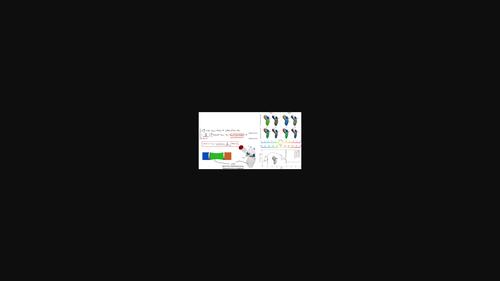当前位置:
X-MOL 学术
›
Int. J. Numer. Method. Biomed. Eng.
›
论文详情
Our official English website, www.x-mol.net, welcomes your feedback! (Note: you will need to create a separate account there.)
Modeling isovolumetric phases in cardiac flows by an Augmented Resistive Immersed Implicit Surface method
International Journal for Numerical Methods in Biomedical Engineering ( IF 2.1 ) Pub Date : 2023-08-24 , DOI: 10.1002/cnm.3767 Alberto Zingaro 1, 2 , Michele Bucelli 1 , Ivan Fumagalli 1 , Luca Dede' 1 , Alfio Quarteroni 1, 3
International Journal for Numerical Methods in Biomedical Engineering ( IF 2.1 ) Pub Date : 2023-08-24 , DOI: 10.1002/cnm.3767 Alberto Zingaro 1, 2 , Michele Bucelli 1 , Ivan Fumagalli 1 , Luca Dede' 1 , Alfio Quarteroni 1, 3
Affiliation

|
A major challenge in the computational fluid dynamics modeling of the heart function is the simulation of isovolumetric phases when the hemodynamics problem is driven by a prescribed boundary displacement. During such phases, both atrioventricular and semilunar valves are closed: consequently, the ventricular pressure may not be uniquely defined, and spurious oscillations may arise in numerical simulations. These oscillations can strongly affect valve dynamics models driven by the blood flow, making unlikely to recovering physiological dynamics. Hence, prescribed opening and closing times are usually employed, or the isovolumetric phases are neglected altogether. In this article, we propose a suitable modification of the Resistive Immersed Implicit Surface (RIIS) method (Fedele et al., Biomech Model Mechanobiol 2017, 16, 1779–1803) by introducing a reaction term to correctly capture the pressure transients during isovolumetric phases. The method, that we call Augmented RIIS (ARIIS) method, extends the previously proposed ARIS method (This et al., Int J Numer Methods Biomed Eng 2020, 36, e3223) to the case of a mesh which is not body-fitted to the valves. We test the proposed method on two different benchmark problems, including a new simplified problem that retains all the characteristics of a heart cycle. We apply the ARIIS method to a fluid dynamics simulation of a realistic left heart geometry, and we show that ARIIS allows to correctly simulate isovolumetric phases, differently from standard RIIS method. Finally, we demonstrate that by the new method the cardiac valves can open and close without prescribing any opening/closing times.
中文翻译:

通过增强电阻浸入式隐式表面法对心脏血流中的等容相进行建模
心脏功能计算流体动力学建模的一个主要挑战是当血流动力学问题由规定的边界位移驱动时模拟等容相。在这些阶段,房室瓣和半月瓣均关闭:因此,心室压力可能无法唯一定义,并且在数值模拟中可能会出现虚假振荡。这些振荡会强烈影响由血流驱动的瓣膜动力学模型,从而不太可能恢复生理动力学。因此,通常采用规定的打开和关闭时间,或者完全忽略等容相。在本文中,我们提出了对电阻浸入式隐式表面 (RIIS) 方法的适当修改(Fedele 等人,Biomech Model Mechanobiol 2017, 16, 1779–1803),通过引入反应项来正确捕获等容相期间的压力瞬变。该方法,我们称为增强 RIIS (ARIIS) 方法,将之前提出的 ARIS 方法 (This et al., Int J NumerMethods Biomed Eng 2020, 36, e3223) 扩展到不适合身体的网格的情况阀门。我们在两个不同的基准问题上测试了所提出的方法,包括一个保留心动周期所有特征的新简化问题。我们将 ARIIS 方法应用于真实左心几何形状的流体动力学模拟,并且我们表明 ARIIS 允许正确模拟等容相,这与标准 RIIS 方法不同。最后,我们证明通过新方法,心脏瓣膜可以打开和关闭,而无需规定任何打开/关闭时间。
更新日期:2023-08-24
中文翻译:

通过增强电阻浸入式隐式表面法对心脏血流中的等容相进行建模
心脏功能计算流体动力学建模的一个主要挑战是当血流动力学问题由规定的边界位移驱动时模拟等容相。在这些阶段,房室瓣和半月瓣均关闭:因此,心室压力可能无法唯一定义,并且在数值模拟中可能会出现虚假振荡。这些振荡会强烈影响由血流驱动的瓣膜动力学模型,从而不太可能恢复生理动力学。因此,通常采用规定的打开和关闭时间,或者完全忽略等容相。在本文中,我们提出了对电阻浸入式隐式表面 (RIIS) 方法的适当修改(Fedele 等人,Biomech Model Mechanobiol 2017, 16, 1779–1803),通过引入反应项来正确捕获等容相期间的压力瞬变。该方法,我们称为增强 RIIS (ARIIS) 方法,将之前提出的 ARIS 方法 (This et al., Int J NumerMethods Biomed Eng 2020, 36, e3223) 扩展到不适合身体的网格的情况阀门。我们在两个不同的基准问题上测试了所提出的方法,包括一个保留心动周期所有特征的新简化问题。我们将 ARIIS 方法应用于真实左心几何形状的流体动力学模拟,并且我们表明 ARIIS 允许正确模拟等容相,这与标准 RIIS 方法不同。最后,我们证明通过新方法,心脏瓣膜可以打开和关闭,而无需规定任何打开/关闭时间。



























 京公网安备 11010802027423号
京公网安备 11010802027423号